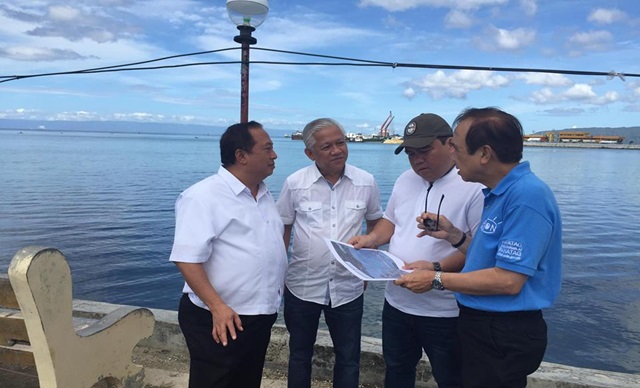
The study for the offshore bridge connector between Tagbilaran City and Panglao island is entering its crucial phase to ensure what best can become of the unprecedented multi-use connectivity facility.
It is considered to be yet the most ambitious infrastructure proposal affecting the two fastest-growing Bohol areas in the most proximate years to come—next only to the Panglao airport which is currently built.
The study phase involves topographic and hydrographic surveys as well as geotechnical investigation along the vicinity of the area of the project, also known as the “third bridge†linking Bohol’s lone city and the prime tourist island.
Provincial Administrator Alfonso Damalerio II on Friday announced that the contractor of the feasibility study and advanced engineering design already asked permission to conduct the highly-technical survey-investigation.
The Department of Public Works and Highways (DPWH) Regional Office awarded the project study and design contract to the Cebu City-based firm CEDCO Engineers after the procurement of the consultancy services was approved by the DPWH Central Office last year.
CEDCO Engineers Gen. Man. Rogelio Eslava last week formally informed the DPWH-7 and Bohol government of the coming of a five-man team to conduct the survey-investigation.
The group will have Engr. Raul Tangonan, senior structural engineer; Engr. Pancrasia Bacus, senior geodetic engineer; Jayson Gabay, survey team leader; and Russel Enate, geotechnical team leader/driller.
Eslava, a geotechnical/soils and material engineer, is himself coming with the team.
The bridge is to meet the projected three-fold growth in the arrivals of visitors bound for various tourist destinations in Bohol and Panglao island by year 2030.
It will provide efficient intermodal transport connectivity between the new fastcraft terminal at the city port and Panglao airport.
The project can reduce travel time by 45 minutes to and from the tourist spots in mainland Bohol and Panglao by the provision of a bridge to bypass the city’s central business district.
The city’s urban traffic will be decongested through the construction of an offshore road directly linking the fastcraft port and new bridge.
The project will enable the execution of the recommendations of the Department of Tourism (DOT) – Japan International Cooperation Agency (JICA) “Sustainable Tourism Management Plan for Central Philippines, Bohol Cluster Destinations.â€
The infrastructure venture is pursuant to the vision of a Tagbilaran City under Mayor John Geesnell Yap II and Vice Mayor Jose Antonio Veloso that is economically lively—and livable to its human settlers.
City Kag. Augustinus Gonzaga said it is a necessity in anticipation of the upsurge of development that will be stimulated by the operation of the Panglao airport, which will be completed in the first quarter of 2018.
Damalerio said the offshore bridge connector can extend starting the area between the K of C and the port in the city to somewhere between Totolan and Songculan in Dauis.
The space-extensive development comes with social components topped by a good relocation plan, according to the provincial administrator, adding that the project implementation is hoped to begin in 2018.
DPWH Sec. Mark Villar last year approved the conduct of the feasibility study and advanced engineering design, the request for which, according to Reg’l. Dir. Ador Canlas, was “initiated by Gov. Edgar Chatto.
Both the Provincial Development Council (PDC) led by the governor and the Regional Development Council (RDC), which he also then chaired then, endorsed the project.
The project is among the irresistible features in the 12-year Bohol Spatial Development Framework Plan (BSDFP), which was adopted and approved by the PDC in its full council meeting last December.
Chatto had already secured P25.885 million to fund the study-design during the time of then DPWH Sec. Rogelio Singson. (Ven rebo Arigo)

Be First to Comment